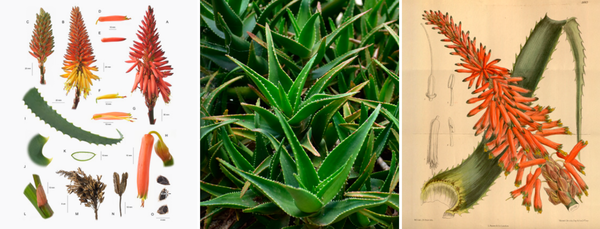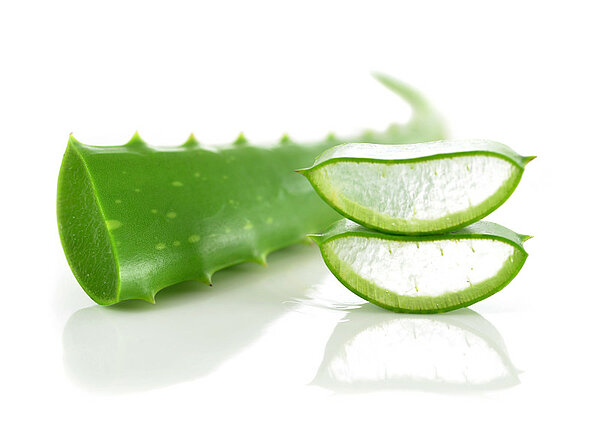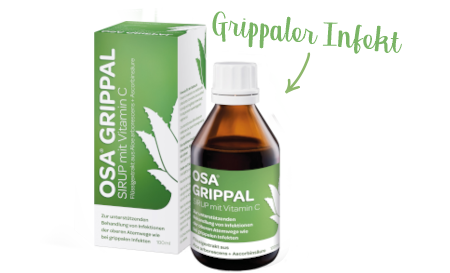
Die Aloe arborescens ist eine mächtige Pflanze aus der Gattung der Aloen (Aloe). Der Stamm ist 2 bis 3 Meter lang und bis zu 30 Zentimeter dick. Mächtig ist auch ihr Nährstoffreichtum. Das Gel, das sich in den Blättern befindet enthält unter anderem 20 Mineralstoffe, 18 Aminosäuren und 12 Vitamine.
Die Aloe arborescens ist eine pharmakologisch gut charakterisierte Pflanze, die von der europäischen Arzneimittelbehörde EMA als traditionelles Heilmittel anerkannt ist und seit Mai 2019 in Österreich zur Verfügung steht. Die Pflanze gehört mit ca. 500 anderen Arten zur Gattung der Aloen; Synonyme sind Kandelaber-Aloe oder Krantz-Aloe. Der Name Aloe leitet sich vom arabischen Wort „Alloeh“ ab und bedeutet „glänzende Bittersubstanz“.
Die sukkulente, mehrjährige Pflanze bildet einen Stamm von 2 bis 5 m Höhe, der an der Basis bis zu 30 cm dick ist und sich oben stark verzweigt (daher der lat. Name arborescens = baumartig wachsend). Die fleischigen, dreieckigen, am Rand gezähnten Laubblätter bilden dichte Rosetten am Ende der Zweige. Die graugrünen Blätter sind bis 60 cm lang und 5 bis 7 cm breit, die Blütenstände werden 60 bis 80 cm lang und bestehen aus dichten 20 bis 30 cm langen und ca. 10 cm breiten Trauben von scharlachroten, bis zu 4 cm langen, zylindrischen Blüten.
Aloe arborescens ist entlang der Küsten des Indischen Ozeans im südlichen Afrika beheimatet (Malawi, Mosambik, Simbabwe und Südafrika) und wächst dort von Meeresniveau bis in Höhen von 2800 m typischerweise auf Felshängen. Aloe arborescens kam natürlicherweise nur in Südostafrika vor (endemisch), wird aber heute weltweit kultiviert und als Ausgangsmaterial für medizinische, kosmetische und Nahrungszwecke angebaut (in China, Israel, Italien, Japan, Polen und auf der Krim). [8]

Die Aloe arborescens war bei den alten Kulturen in ihrem Herkunftsgebietes seit langem als Heilpflanze bekannt, die moderne Medizin hat sie aber erst in den 1930er Jahren entdeckt. (Bei den vielfältigen Anwendungen, von denen seit der Antike berichtet wird, handelt es sich wahrscheinlich nicht um Aloe arborescens.)
Den Inhaltstoffen der Aloe arborescens werden folgende physiologische Wirkungen durch in-vitro-, in-vivo- oder klinische Studien belegt: [14]

Aufgrund ihres einzigartigen therapeutischen Profils werden Präparate aus Aloe arborescens vor allem bei folgenden Indikationen eingesetzt: [1, 2, 7, 10, 17]
Arzneimittel mit Aloe arborescens sind besonders geeignet zur Behandlung und Rezidivprophylaxe von Erkältungskrankheiten bei Kindern. Dafür sprechen die guten Erfahrungen im jahrzehntelangen Einsatz und ihre sehr gute Verträglichkeit. [8]
Die Aloe arborescens ist nicht mit der Aloe vera zu verwechseln. Die Aloe vera wird in Österreich lediglich als kosmetisches Mittel genutzt wird, während die Aloe arborescens wesentlich gesünder ist, und als Heilpflanze zugelassen ist. Daher ist sie auch Bestandteil des Osa® Grippalsirups.

OSA® Grippalsirup mit Vitamin C enthält den Wirkstoff der Aloe arborescens und stimuliert die körpereigenen Abwehrkräfte. Besonders effektiv ist OSA® Grippalsirup im Einsatz gegen akute Infektionen der oberen Atemwege wie Husten, Schnupfen und Heiserkeit.
OSA® Grippalsirup
[1]
Akaberi M, Sobhani Z, Javadi B, et al. Therapeutic effects of Aloe spp. in traditional and modern medicine: A review, Biomedicine & Pharmacotherapy, 10.1016/j.biopha.2016.09.096, 84, (759-772), (2016).
www.ncbi.nlm.nih.gov/pubmed/27716590
[2]
Bastian P, Fal AM, Jambor J, et al. Candelabra aloe (Aloe arborescens) in the therapy and prophylaxis of upper respiratory tract infections: traditional use and recent research results. Wien Med Wochenschr 2013;163:73-79
link.springer.com/article/10.1007%2Fs10354-012-0171-3
[3]
Cichocki M, Michalak A, Appel K. Anti-inflammatory properties of Aloe arborescens and Aronia melanocarpa preparation BIOARON C®. Acta Bioch Pol Poznan 2012
[4]
El Fiki NM, Shehata IA, et al. Biological study and phytochemical screening of several aloe species cultivated in Egypt. Planta Med 2011;77(12):PL107
www.thieme-connect.com/products/ejournals/abstract/10.1055/s-0031-1282756
[5]
Gawron-Gzella, A. et al. “Antimicrobial activity of preparation Bioaron C.” Acta poloniae pharmaceutica 71 5 (2014): 795-802.
www.semanticscholar.org/paper/Antimicrobial-activity-of-preparation-Bioaron-C.-Gawron-Gzella-Michalak/45c02d419c3527d567f004d6119ef3dd77313fda
[6]
Glatthaar-Saalmüller B, Fal AM, Schönknecht K, Conrad F, Sievers H, Saalmüller A. Antiviral activity of an aqueous extract derived from Aloe arborescens Mill. against a broad panel of viruses causing infections of the upper respiratory tract. Phytomedicine 2015;22:911-920
www.sciencedirect.com/science/article/abs/pii/S0944711315001944
[7]
Horoszkiewicz-Hassan M, Beuscher N, et al. Tolerability and efficacy of Bioaron C®
syrup in the treatment of upper respiratory tract infection in children. Results of a post marketing surveillance study in Poland. Herba Polonica 2005;51:45-53
eurekamag.com/research/004/486/004486492.php
[8]
Initiative für Allgemeinmedizin und Gesundheit: Phytopharmaka in der Behandlung von Infektionen der oberen Atemwege bei Kindern und Jugendlichen –
Stellenwert von OSA® Grippalsirup mit Vitamin C. Experten-Statement. Update Europe – Gesellschaft für ärztliche Fortbildung · Internationale Zeitschrift für ärztliche Fortbildung · Nr. 5/September 2019
[9]
Jia Y, Zhao G, Jia J. Preliminary evaluation: the effects of Aloe ferox Miller and Aloe arborescens Miller on wound healing. J Ethnopharmacol 2008;120:181-189
www.ncbi.nlm.nih.gov/pubmed/18773950
[10]
Lehnfeld R, Appel K. Anti-inflammatory activity of the herbal product Bioaron C®. Annual Congress of the Society for Medicinal Plant Research 2003
nach: med-expert.com.ua/en/evaluation-of-clinical-efficacy-and-safety-of-using-the-drug-bioaron-s-with-outpatient-treatment-of-acute-respiratory-infections-in-children/
[11]
Nazeam JA, Gad HA, Esmat A, El-Hefnawy HM, Singab AB. Aloe arborescens Polysaccharides: In Vitro Immunomodulation and Potential Cytotoxic Activity. J Med Food 2017;20(5):491-501
www.ncbi.nlm.nih.gov/pubmed/28414560
[12]
Olennikov DN, Zilfikarov IN, Penzina TA. Use of microcolumn HPLC for analysis of aloenin in Aloe arborescens raw material and related drugs. Pharm Chem J 2013;47:494-497
link.springer.com/article/10.1007%2Fs11094-013-0988-0
[13]
Pampura A, Beuscher N, Smirnova M, et al. Clinical evaluation of the efficacy and safety of Bioaron C in children with recurrent bacterial and viral infections of the upper respiratory tract. Planta Med 2007;73:034
www.thieme-connect.com/products/ejournals/abstract/10.1055/s-2007-986816
[14]
Salehi B, Albayrak S, Antolak H, et al. Aloe Genus Plants: From Farm to Food Applications and Phytopharmacotherapy, International Journal of Molecular Sciences, 10.3390/ijms19092843, 19, 9, (2843), (2018).
www.mdpi.com/1422-0067/19/9/2843/htm
[15]
Schönknecht K, et al. Anti-viral activity of Biostymina® (Aloe arborescens folii recentis extractum fluidum) against viruses causing upper respiratory tract infections tested in vitro. Postepy Fitoterapii 2014;3:127-135
www.researchgate.net/publication/328890197_Anti-viral_activity_of_BiostyminaR_Aloe_arborescens_folii_recentis_extractum_fluidum_against_viruses_causing_upper_respiratory_tract_infections_tested_in_vitro
[16]
Singab AN, El-Hefnawy HM, Esmat A, et al. A Systemic Review on Aloe arborescens Pharmacological Profile: Biological Activities and Pilot Clinical Trials. Phytother Res 2015;29:1858-67
onlinelibrary.wiley.com/doi/abs/10.1002/ptr.5483
[17]
Tsodikova OA, Garbar KB, Barchan GS. Clinical and immunological features of homeostasis in children with recurrent respiratory infections and their dynamics during the use of phytopreparation Bioaron C. Sov pediatriya 2011;5:117-121
Clinical and immunological features of homeostasis in children with recurrent respiratory infections and their dynamics during the use of phytopreparation «Bioaron C».
[18]
Yamamoto M, et al. Anti-inflammatory Active Constituents of Aloe arborescens Miller. Agricultural and Biological Chemistry 1991;55:6:1627-1629
www.tandfonline.com/doi/abs/10.1080/00021369.1991.10870794
[19]
Di Luccia B, et al. A biochemical and cellular approach to explore the antiproliferative and prodifferentiative activity of Aloe arborescens leaf extract. Phytother Res. 2013 Dec;27(12):1819-28. doi: 10.1002/ptr.4939
www.ncbi.nlm.nih.gov/pubmed/23418125